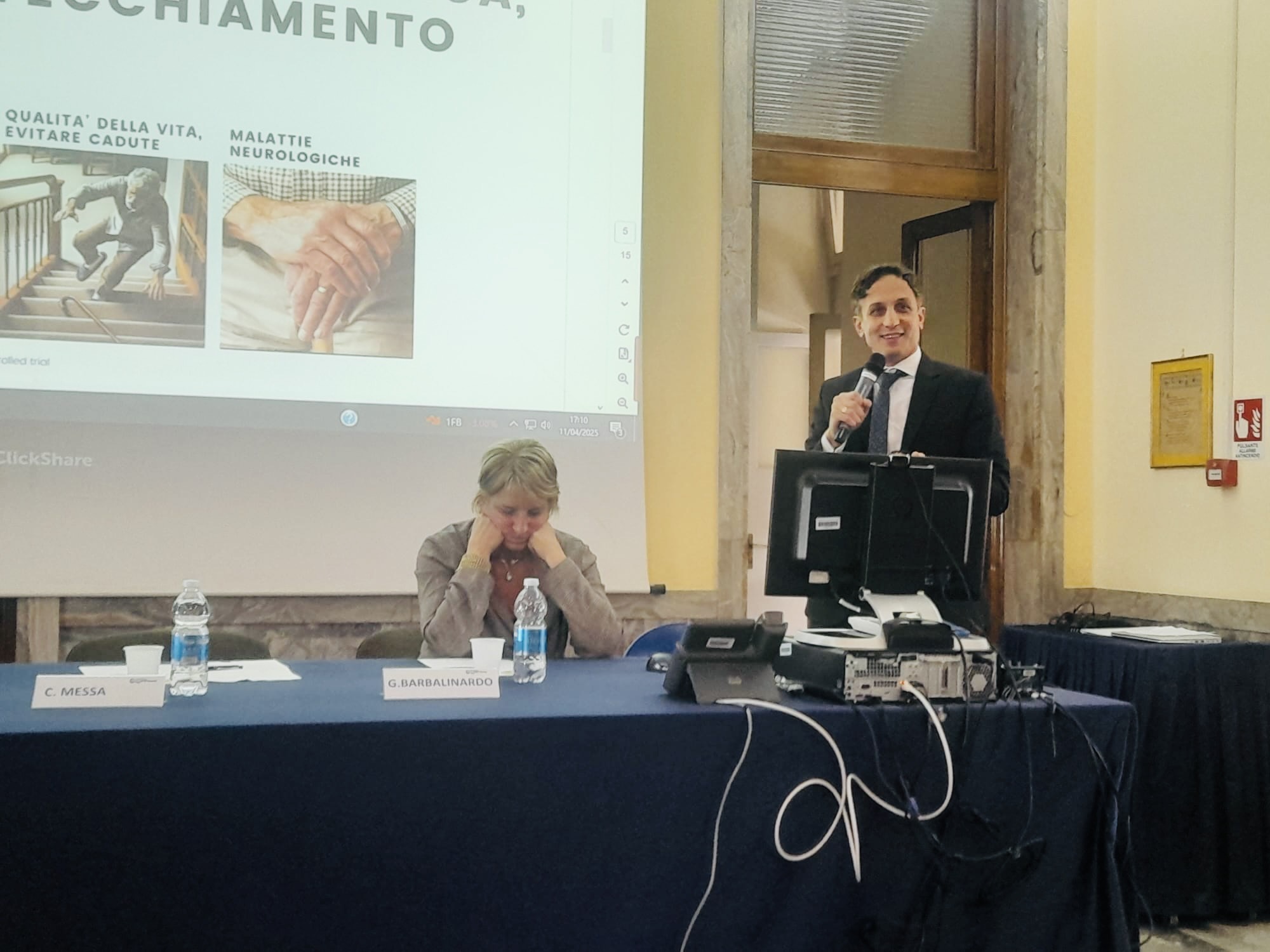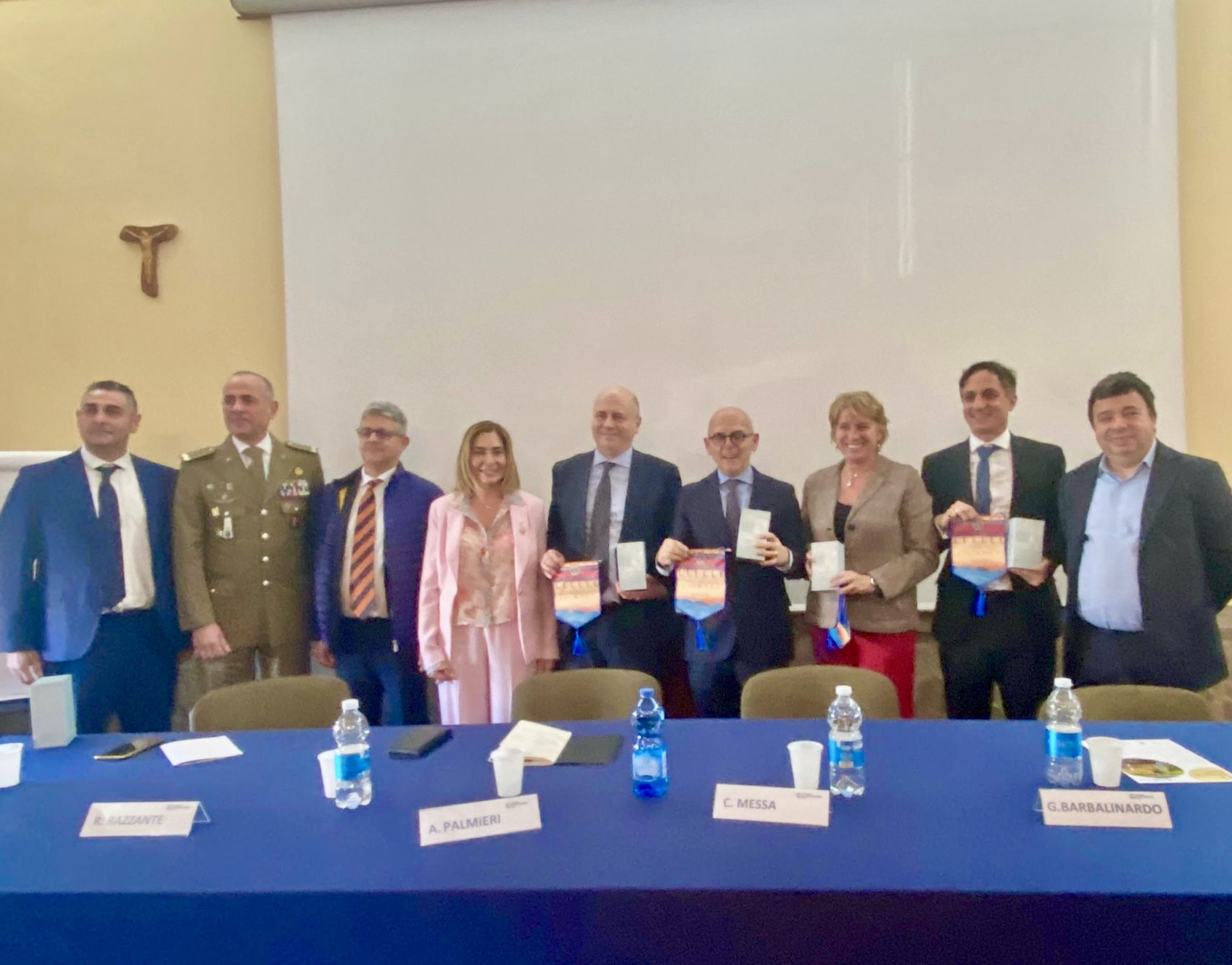We live in a time when technology, and artificial intelligence in particular, is no longer confined to technical environments or specialist fields. It plays an increasingly central role in daily life, influencing how we care for one another, how we teach and learn, and how we organize social services. This shift urges us to ask how innovation can truly serve people, especially those in vulnerable conditions such as older adults or individuals living with fragility.
This question guided the public forum held on April 11 at the Istituto Palazzolo in Milan, titled “Intelligenza artificiale, anziani e fragilità. Una sfida per la nostra umanità.” The event was made possible by a network of organizations, including Fondazione Don Gnocchi Onlus, Amici di Don Palazzolo, MI’impegno, and was supported by the Lions District 108Ib4 and Pensiero Solido. It was moderated with clarity and empathy by Antonio Palmieri, co-founder of Pensiero Solido, who opened the conversation with a call to reflect not only on innovation but on human connection.
Dr. Antonio Troisi, director of the Don Gnocchi Foundation, emphasized that artificial intelligence must be complemented by emotional intelligence. Technology should never diminish human presence. In elder care especially, the relationship with patients and their families remains central, and data, no matter how advanced, must be guided by this relational intelligence.
Throughout the event, speakers offered a wide range of perspectives. Professor Maria Cristina Messa, scientific director of the foundation and former Minister of University and Research, spoke about the untapped potential of data in managing chronic illness. She highlighted how existing limitations are not just technological, but educational and cultural. Data alone is not enough. It requires interpretation, action, and trust.
I had the opportunity to share insights from my work as Senior Director of Artificial Intelligence at Tonal, a company based in San Francisco. At Tonal, we work with motion data and smart rehabilitation systems, collecting millions of sessions across hundreds of thousands of users. We use these datasets to offer personalized support through AI, particularly in physical therapy and resistance training.
I asked the audience a simple but meaningful question: what would you do to gain four more healthy years of life? According to a study of more than 500,000 people aged 21 to 90, engaging in regular physical activity, between ten and twenty hours a week, can significantly extend life expectancy1. Yet the study also shows that people over the age of 55 are less likely to access spaces for physical activity. When support is most needed, it is often least available.
This is where AI systems can make a difference. Using computer vision and biomechanical modeling, we can analyze movement quality, provide real-time corrections, and adapt resistance levels to suit the user. These systems do more than guide exercise. They enhance safety, autonomy, and confidence. They also help us prevent injuries and support healthy aging by making physical activity accessible and personalized.
Technology can also reduce social isolation. Voice assistants, wearable devices, and experimental tools like brain-computer interfaces are breaking down barriers to communication. In the presentation, I shared how sensors that read muscle activity or eye movement can offer alternative ways of interacting with devices, especially for those with reduced mobility. AI has the potential to make daily life more navigable, even for those living with severe limitations.
Ethics remain at the core of this conversation. I invited the audience to consider how AI systems reflect the data they are trained on. A simple example: when you ask an AI to generate a photo of a wristwatch, it will likely show the time as 10:10. That result has nothing to do with functionality and everything to do with tradition, as most advertisements in the last century used this layout. This small example reveals a deeper reality. AI systems absorb the assumptions of our culture, including its biases. While a bias in wristwatch advertising might be harmless, biases related to race, gender, religion, or age can have much more serious consequences. That is why we must insist on responsible data practices and ethical oversight at every stage of development.
Legal scholar Dr. Ruben Razzante addressed this directly, explaining his work with the Senate Anti-Hate Commission and the proposal to amend national legislation to ensure that algorithmic systems follow clear ethical principles. He reminded us that technology is never neutral, and should always reflect a commitment to human dignity.
The voices at the forum were diverse. Dr. Carmelo Ferraro spoke about the importance of building social cohesion and fighting isolation. Dr. Rossella Vitali, governor of the Lions District, introduced the powerful concept of "solidarity technology," innovation that emerges from collaboration among institutions and communities. Vito Santo Pietroforte, president of Amici di Don Palazzolo, reminded us that the goal of the forum was not just to inform, but to energize all those who work with and for the elderly.
A deeply moving moment came with a written message from aerospace engineer Giacomo Chiametti, a long-time resident of the institute, which was read aloud by volunteer Antonio Barbalinardo. It reminded us that human stories always lie at the center of these discussions.
In closing, I believe this conference made one thing very clear. Artificial intelligence, like any powerful tool, brings both promise and risk. It must be studied, not feared. Directed, not left to chance. Our society is aging. If we are thoughtful, collaborative, and ethically grounded, AI can become an ally in building a more inclusive, more caring, and more human future.
The challenge is not just technological. It is cultural, social, and above all, human. And it is one we must face together.
1. Moore SC, Patel AV, Matthews CE, Berrington de Gonzalez A, Park Y, Katki HA, et al. (2012). Leisure Time Physical Activity of Moderate to Vigorous Intensity and Mortality: A Large Pooled Cohort Analysis. PLoS Med 9(11): e1001335. https://doi.org/10.1371/journal.pmed.1001335

